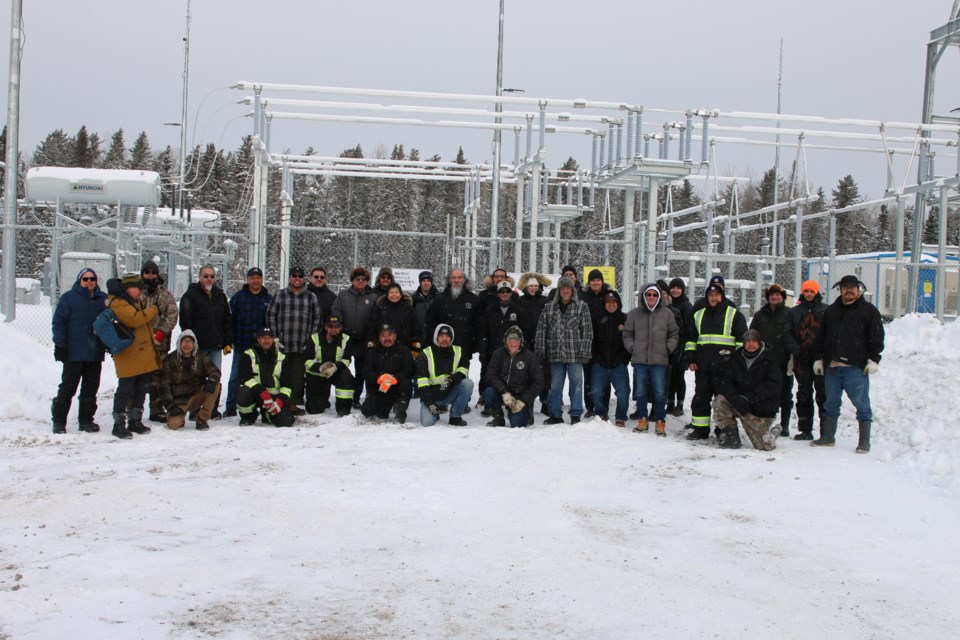POPLAR HILL — A reliable connection to the provincial power grid is seen not only as an essential utility for future generations, but a live-saving necessity for at least one family in remote Poplar Hill First Nation in northwestern Ontario.
Marie Childforever's seven-year-old son has been connected to machines to provide oxygen 24/7 since he became sick when he was two months old.
She said the new Wataynikaneyap (Watay) Power line is a relief as a mother raising a child with disabilities in a remote fly-in community.
When the power goes out, she explained that his oxygen tank only lasts for two hours and the CPAP machines’ battery lasts for six hours. She is relieved that everything is now connected to Hydro One.
“It feels more better here. Less wariness because we constantly worry because of what our child is going through,” said Childforever.
“We’re always warned by the doctor that he’s going to go any time, because he was let go when he was two months old and he has a serious condition.”
Located 570 kilometres northwest of Thunder Bay, Poplar Hill is only accessible by air or winter ice roads.
The isolated First Nation was connected to the grid through the Wataynikaneyap Power transmission system on Dec. 17.
She said her family is still worried because the power sometimes goes off when there’s a storm coming and the lines get cut off, but they have a backup generator for those emergencies.
Poplar Hill invited community members, stakeholders and dignitaries to celebrate the new power connection to the Ontario grid on Jan. 29.
“It’s for the power. For the lights. For the grandkids. Like in the future, we’re gonna use this power,” said Poplar Hill Chief Alvin Owen.
Previously running on diesel power, the system will now allow Hydro One Remote Communities to distribute electricity through 190 kilometres of transmission line and four substations originating from Red Lake.
Owen said there are savings to be had as the community will no longer have to ship in diesel fuel for generators. He expects fewer outages.
“I heard a lot of people are excited when we had that power turned on because sometimes we have a problem with our generators,” he said.
Wataynikaneyap Power only has a few communities left to meet its goal of ultimately connecting 16 remote First Nations to the Ontario power grid and removing their reliance on diesel-generated electricity.
The progress made in building and operating the 1,800 kilometres Wataynikaneyap Power transmission system, alongside other projects, has taken about 34 years said Margaret Kenequanash, CEO of Wataynikaneyap Power.
“Sometimes I have to shake my head because it’s been such a long time that our communities have been pursuing energy,” she said.
“Finally reaching that milestone and accomplishment to bring reliable energy into the north, it’s a major milestone for our people,” said Kenequanash.
“And not only that, because of ownership and the vision that they’ve set out and the expectations in terms of how we conduct ourselves in our homeland, it is so important and it’s a huge, huge accomplishment.”
Kenequanash said she was very excited to join Obazaadiikaang, also known as Poplar Hill First Nation, in the gathering to celebrate their combined achievement in bringing reliable energy into the community.
She wanted to acknowledge their leaders and people for that huge accomplishment because if it weren’t for them, they ‘would not be here today.’
The next gathering to celebrate the system is planned for North Spirit Lake First Nation and afterward, they will head to two final communities.




